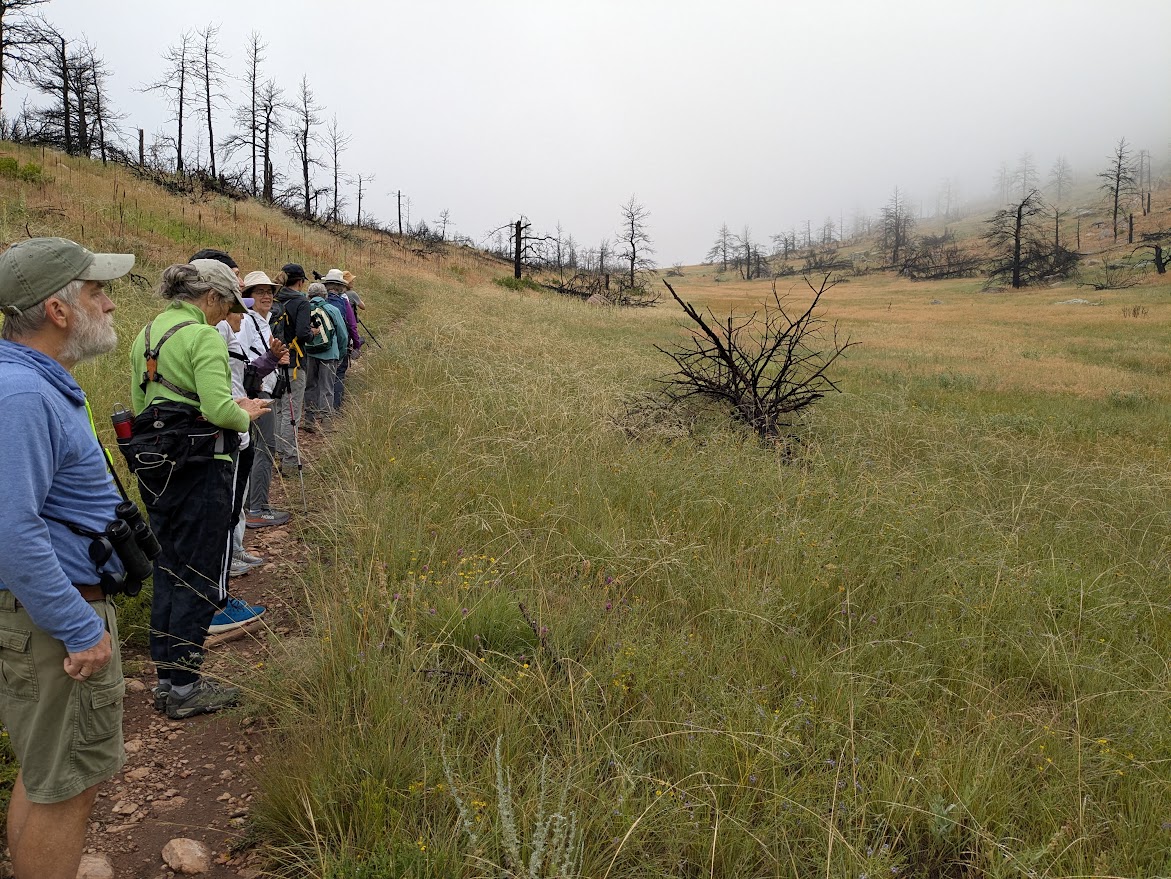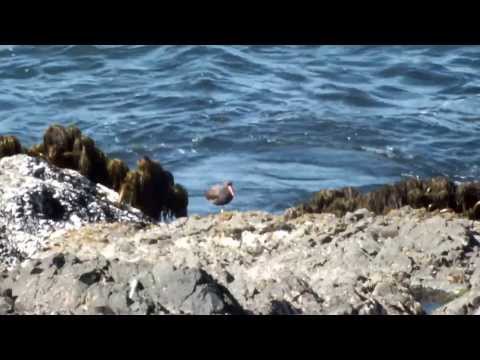
After the previous sweltering hot days, it was a relief that this past Saturday was cool and overcast, especially since the 2020 Cal-wood fire burned most of the trees along the Lichen Loop. Also, the last time I led this walk the trail was severely encroached upon by thistles and mullein, but I was happy to note that wasn’t the case this time.
We had an extremely birdy morning! Not only did we get to see and/or hear all of our target species (Blue Grosbeak, Lark Sparrow, Yellow-breasted Chat, and Lazuli Bunting), but we were treated to great looks at not one, but two sets of parents feeding nestlings. A pair of Bullock’s Orioles and a pair of Western Kingbirds had set up shop in nearby trees so we were able to watch the parents coming and going as they brought in breakfast for the kiddos.
Bullock’s Orioles weave their nests primarily out of grasses or rootlets and, on average, lay 4 or 5 eggs. It seemed a little late for this pair to still have babies in the nest, but apparently they may re-nest if something happens to the first clutch. Rarely, they may also have a second clutch.
Unlike orioles that make pendulous nests, Western Kingbirds construct cup nests, many times in the crotch of a tree, which is exactly where this nest was. They lay a similar number of eggs to Bullock’s Orioles (usually between 3 and 5). We could see at least one baby when either of the parents came to feed and before mom would plop down onto the nest. From how frequently feedings were happening for both nests, it seems like there are plenty of insects at Heil Valley Ranch this summer!
Other than the nesting birds, the highlight of the walk was definitely the Lewis’s Woodpecker. This woodpecker is unusual in that it acts more like a flycatcher, sallying forth from a branch to catch insects in mid-air, versus drilling them out of bark, although they will sometimes also do that. About the same size as a Northern Flicker, Lewis’s Woodpeckers are also unusually colorful for a woodpecker. Their pink and green coloring makes me call them the “watermelon bird.” I’ve heard that Lewis’s tend to show up about 7 years following a burn so 5 years after the Cal-wood fire is about on-schedule.
In all, we had 31 bird species, a great showing for a non-riparian area in July. We hope you can join us on a future bird walk! No matter what we see, we always have a great time!
Lichen Loop Trail, Boulder, Colorado, US
31 species
Mourning Dove 5
Black-chinned Hummingbird 1
Broad-tailed Hummingbird 3
Lewis’s Woodpecker 2
Hairy Woodpecker 4
Northern Flicker 5
American Kestrel 2
Western Wood-Pewee 4
Western Flycatcher 1
Eastern Phoebe 2
Say’s Phoebe 1
Western Kingbird 4
Blue Jay 1
Black-billed Magpie 3
Violet-green Swallow 1
White-breasted Nuthatch 1
Rock Wren 1
Northern House Wren 3
House Finch 4
Lesser Goldfinch 3
American Goldfinch 3
Lark Sparrow 5
Vesper Sparrow 1
Spotted Towhee 6
Yellow-breasted Chat 1
Western Meadowlark 9
Bullock’s Oriole 4 Feeding in nest
Brown-headed Cowbird 2
Western Tanager 2
Blue Grosbeak 3
Lazuli Bunting 4









 Birds have sharper vision than humans and are able to see certain light frequencies that humans cannot see, such as ultraviolet. In fact, many songbirds have feathers that reflect UV light to help communicate species, gender, and perhaps even social standing. Birds can see UV under normal daylight conditions, while humans require a black light. Since birds can see UV light, the use of WindowAlert UV Decals and Liquid will substantially lower the amount of birds hitting your window. The WindowAlert UV Decals appear as frosted or etched glass to the human eye but birds see it as a brilliant glow like a stoplight. are small clings that are placed on the outside of your clean window. Birds see the decal and know that is not a clear direction of flight.
Birds have sharper vision than humans and are able to see certain light frequencies that humans cannot see, such as ultraviolet. In fact, many songbirds have feathers that reflect UV light to help communicate species, gender, and perhaps even social standing. Birds can see UV under normal daylight conditions, while humans require a black light. Since birds can see UV light, the use of WindowAlert UV Decals and Liquid will substantially lower the amount of birds hitting your window. The WindowAlert UV Decals appear as frosted or etched glass to the human eye but birds see it as a brilliant glow like a stoplight. are small clings that are placed on the outside of your clean window. Birds see the decal and know that is not a clear direction of flight.